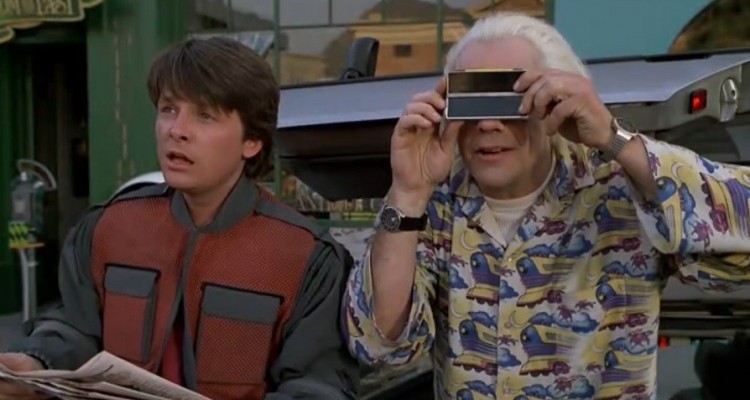It should come as no surprise that science fiction writers have often provided prescient glimpses of future technologies. From the advanced submarine imagined by Jules Verne in his 1870 novel Twenty Thousand Leagues Under the Sea to the spacecraft described by H.G. Wells in his 1897 novel The War of the Worlds, there are countless examples of science fiction works that have foreshadowed, or even inspired, the development of real technologies.
With the advent of motion pictures, science fiction writers’ ideas about what the future might look like could also be visually brought to life on screen. While it would be nearly impossible to cite all the future technologies depicted in movies over the hundred-plus years that the medium has existed, there have been several notable science fiction films that have provided particularly accurate predictions of technologies before they were invented.
Since there are so many films that depict fictional technologies that were later invented, this list is far from comprehensive. However, we tried to include films that featured the earliest depiction of a particular technology. We also highlighted several films that accurately predicted multiple future technologies. On the other hand, some of the movies included on this list were chosen according to our personal preferences and our subjective opinion of what constitutes an accurate prediction of a future technology. Keeping those caveats in mind, here are eight science fiction movies that provided amazingly accurate glimpses of future technologies. Movies are listed in the order of their release dates, from oldest to newest.
Movie: Metropolis (1927)
Technology: Android
No, director Fritz Lang’s seminal science fiction film does not depict Google’s open source operating system. However, it does feature one of the earliest movie portrayals of a robot that is made to look like a human. In the film, a mad scientist named Rotwang transforms a robot into a doppelgänger of another character named Maria, in order to crush a workers revolt.
While today’s androids may not approach the same level of human likeness as Rotwang’s creation, there are plenty of fairly realistic humanoid robots that will take you deep into the uncanny valley. Perhaps the secret to more realistic androids lies in Rotwang’s use of a Tesla coil and an inverted pentagram. As an added bonus for science fiction fans, it should be pointed out that the original robot in Metropolis looks a lot like a cross between Star Wars’ C-3PO and Spaceballs’ Dot Matrix.
Movie: Woman in the Moon (1929)
Technology: Space travel
While French director Georges Méliès’s famous A Trip to the Moon film preceded Woman in the Moon by over twenty years, the depiction of space travel in Fritz Lang’s film is considered much more realistic. While the characters in A Trip to the Moon utilize a giant cannon to launch their spacecraft into the eye of an anthropomorphic moon, Woman in the Moon includes a fairly accurate depiction of a multistage rocket launch.
On the other hand, the film’s depiction of some aspects of rocket travel and the moon were pretty far off base, such as the rocket’s launch from water and the existence of a lunar atmosphere. Still, Woman in the Moon offers an amazingly prescient depiction of later rocket launches into space, especially considering that the movie was made 28 years before the Soviet Union’s Sputnik 1 launch.
Movie: 2001: A Space Odyssey (1968)
Technology: Tablet computer
Among all the wondrous technical gadgetry depicted in Stanley Kubrick’s groundbreaking science fiction film is a device that many of us likely own today: the tablet computer. Besides depicting devices that bear an unmistakable resemblance to the tablets we use today, Kubrick’s film also fairly accurately predicted the time period when these devices would appear. Apple’s iPad made its debut in 2010, only nine years after the setting of 2001: A Space Odyssey.
As reported by FOSS Patents, the movie props’ resemblance to Apple’s iPad became enshrined in U.S. federal court records when Samsung cited 2001: A Space Odyssey as prior art against Apple’s iPad design patent claim. Fortunately — as far as we know — no one has yet tried to replicate Kubrick’s depiction of a killer artificial intelligence.
Movie: Star Trek III: The Search for Spock (1984)
Technology: Mobile phone
When it comes to predicting future technologies, it can be argued that the Star Trek franchise tops all other science fiction movies combined. Some of the currently existing technologies that the Star Trek franchise predicted include videophone communications, 3-D printers (replicators), and computer speech recognition. However, perhaps the most iconic Star Trek technology that later became a reality is the handheld communicator.
Interestingly, the first two Star Trek theatrical releases — Star Trek: The Motion Picture and Star Trek II: The Wrath of Khan — depicted the films’ characters using wrist-worn communicators instead of the classic handheld devices used on the original television series. So perhaps the smartwatch should also be added to the list of technologies predicted by Star Trek. However, the classic handheld communicators returned in Star Trek III: The Search for Spock.
Martin Cooper, the inventor of the first cell phone, cited the handheld communicators depicted in the Star Trek universe as an inspiration for his invention, according to TIME. While Cooper’s first cell phone was a “brick” that bore little resemblance to the handheld communicator seen in the clip above, the “flip phone” design that was later used by various mobile phone makers appears to be directly inspired by Star Trek’s iconic devices.


Leave a Reply